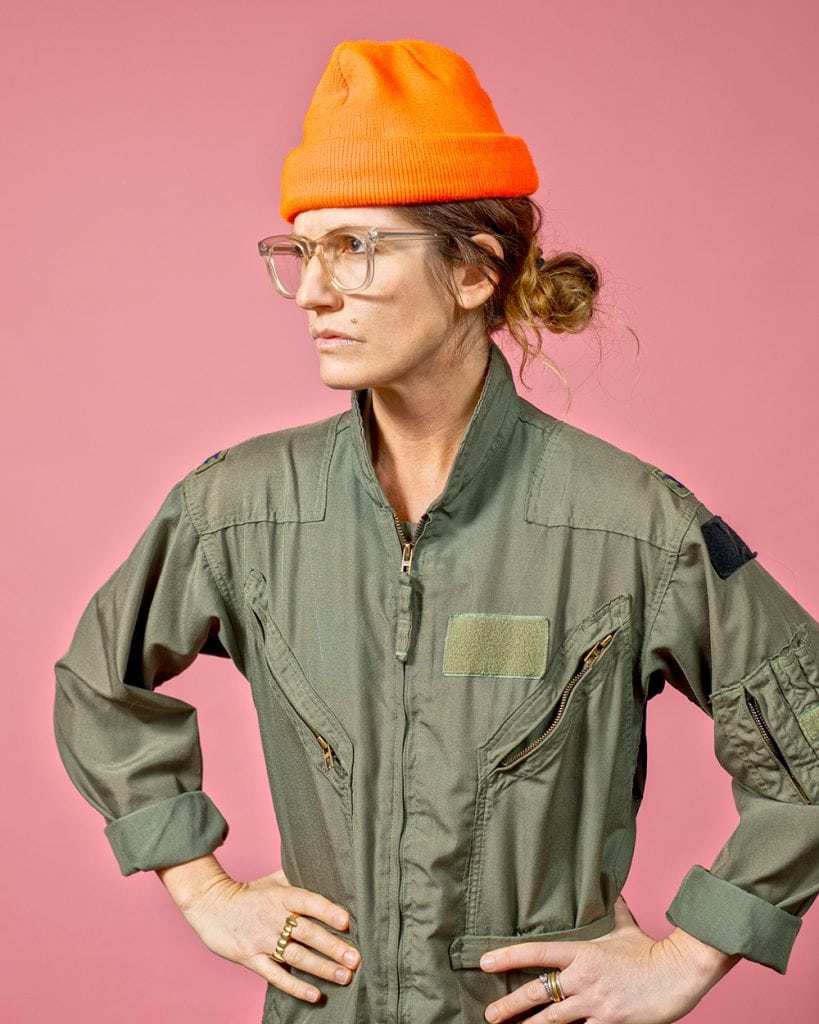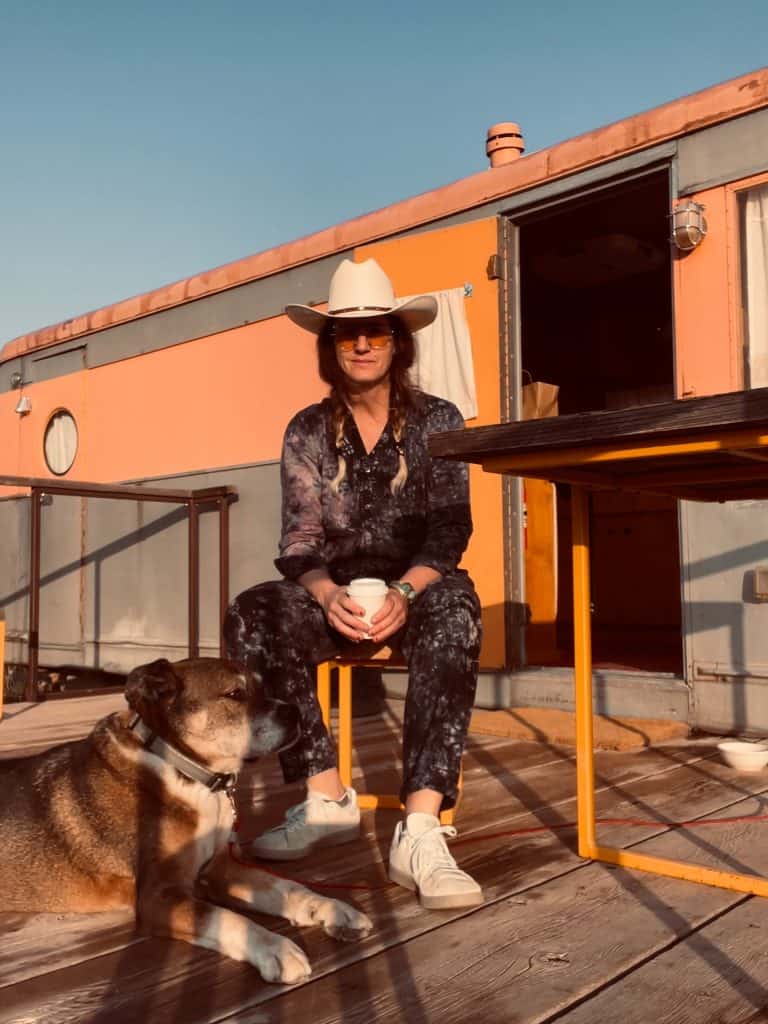Introducing “Queer From Here,” a Conversation with Photographer Lauren Tabak
By Christopher Treacy

As we head into our month-long celebration of Pride, Country Queer is launching a photographic series you won’t want to miss. Think of it as a mashup. Clio Award winning filmmaker and photographer Lauren Tabak began her “Queer From Here” series several years ago as an exploration of modern queer identity in portraiture. Up until quite recently, the project was called “Gayface.” Given her 15+ year tenure in the music industry, we immediately said YES! when Tabak approached us about expanding the scope of the already existing series to include some of the familiar faces of Country Queer. And so, a new component of “Queer From Here” was born.
“Queer From Here” asks some important questions about how we present ourselves to each other and to the larger world around us. It isn’t possible to definitively answer those questions. Instead, they inspire conversations among us…and within us. Each of Tabak’s portraits from the CQ portion of the series, which will run on Mondays for at least the next two months, is accompanied by a statement from the subject, articulating their thoughts about the visual components of queer identity.
As she prepares to hang the series at Friends and Family Bar in Oakland, CA later this week, Tabak took time out to answer a few questions about #queerfromhere and her career in visual arts. Find out more about Lauren Tabak here, and you can look forward to seeing the first photo in the series on Monday, June 6, featuring Jaimee Harris.
Happy Pride, y’all. For more from the series, go here.
What originally drew you to portraiture?
I came into portraiture by way of video production actually. I got my start in the music industry creating editorial features with everyone from The Rolling Stones to Nas… I think I even did something in the early aughts with Brandi Carlile when she had just signed to Columbia Records. But to be honest, a lot of it hasn’t aged that well. Whereas a photograph–a single frame–can be simultaneously timely and timeless. And that’s what I’m trying to do with this project, to capture a moment in time in a format that will stand the test of time. I’m trying to create an archive of modern queer identity that explores what it’s like to be queer here & now. Or then & there, I suppose, if one were to look back at this body of work 20, 50 or 100 years from now.
How did the “Queer From Here” concept originally come together in your mind?
I wish I could remember exactly. I know I was sitting at a desk watching the progress bar on a video edit and thinking “gayface” would be a good name for a series so I did some quick googling and grabbed the instagram handle. The original concept was to shoot two images – a daytime work look and a more flamboyant out-on-the-town look, one black and white, one color, but after a test shoot I decided it best to keep it simple. And then last night I got an email from someone who told me that they also had a photo project called “GAYFACE” that they started in like 2011. So, I thought I’d take this opportunity with y’all to announce a rebrand!
What has been the most surprising part of how the series has been received? And, most satisfying?
I was shooting someone the other day who mentioned how surprised he was that people were willing to be so vulnerable in their statements. He said I’d photographed a few of his friends, and the things they wrote about in their accompanying statements were more intimate in nature than any conversations he’d ever had with them. But it goes both ways, I think. I’m actually very socially awkward, or at least I was as a younger person and I still think of myself that way. So, for me to invite a stranger into my space and hold a conversation with them for an hour, trying to make them feel comfortable… and then having to share the images with them in an email afterward and hoping that they approve of my work? That’s me being very vulnerable. What’s been really surprising were some of the messages I’ve received out on the road from folks asking if they could participate if they are a transman who dates women, or a bisexual woman who dates a cis man – in other words, folks asking me if they are queer enough. That never happens in San Francisco. I spent a month or so on the road with my dog Louis, traveling the country, shooting portraits, and having a lot of conversations along the way, and it was eye-opening for sure. When I created the project I had no aspirations to have it show in galleries across the country, so the fact that that’s happened, that people are excited to receive it, and to participate, I suppose that has been the most satisfying aspect. There was a young person who came to the show in Nashville—well, their mother brought them, actually. A guidance counselor at their school had read about it in the weekly paper and suggested it as a place that they could be around other gender non-conforming people. And, well, that was just wonderful.

Has photographing musicians for this offshoot of the series felt different to you? If so, how?
Well, I’m a musician myself and like I said, I’ve been working in the music industry for 20 years, so nothing about shooting musicians feels different to me. However, during one of the shoots for this series, music by the musician I was photographing started playing as a Spotify pick from my library, and they were like “Hey Now! This is a good song,” and I was outed as a fan, which definitely threw off my game. It’s not the first time that has happened either! I guess it’s a blessing and a curse to be able to work with artists you really admire.
Of the work you’ve done and exhibited in your career thus far, what are you most proud of – and why?
I had an opportunity a couple of years back to work with a music writer named Barry Walters and direct a documentary for Amazon about San Francisco disco icon Sylvester. It was April of 2020—basically the first month of the pandemic. Every email I sent more-or-less went: “I hope this email finds you well in times of grave uncertainty, but I’d like to license this Joan Rivers clip” or whatever. I was having to scour the internet for USB microphones to send across the country to interview subjects. External cameras were completely sold out. One interviewee lost three family members to COVID the week we were supposed to film. I stood outside of the home of another interview subject for two hours trying to download his self-shot iPhone footage over their wifi. I mean, at this point in the pandemic we were all Cloroxing our house keys here in the Bay Area. It was so ‘Wild West.’ It felt like a completely Herculean task to get the thing done, much less completed on deadline and budget. But we did, and it won a Clio Award. And my mom knows what a Clio Award is, so… I’m obviously very proud of that.
Christopher Treacy has been writing about music and the music industry for 20 years. He’s contributed to The Boston Phoenix, The Boston Herald, Nashville Scene, and Berklee College of Music’s quarterly journal, as well as myriad LGBTQ+ outlets including the Edge Media Network, Between the Lines/Pride Source, Bay Windows and In Newsweekly. He lives in Waitsfield, VT.